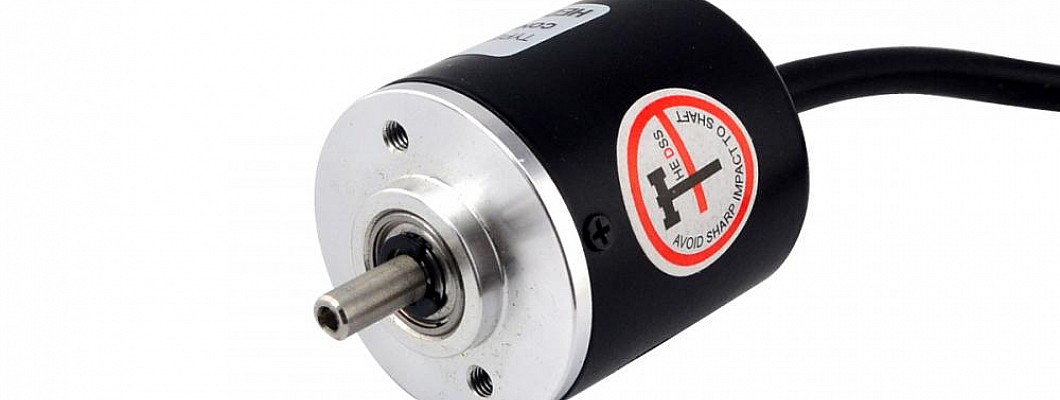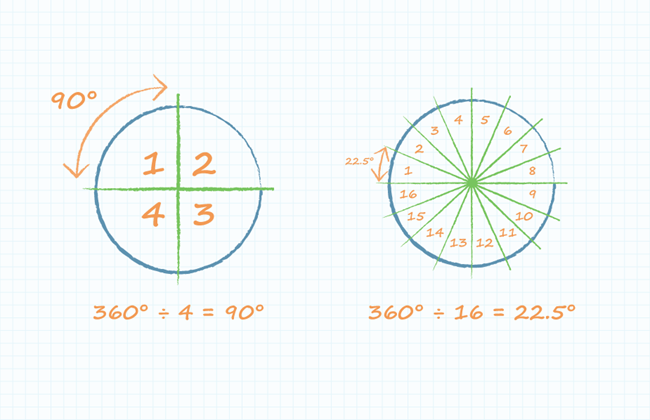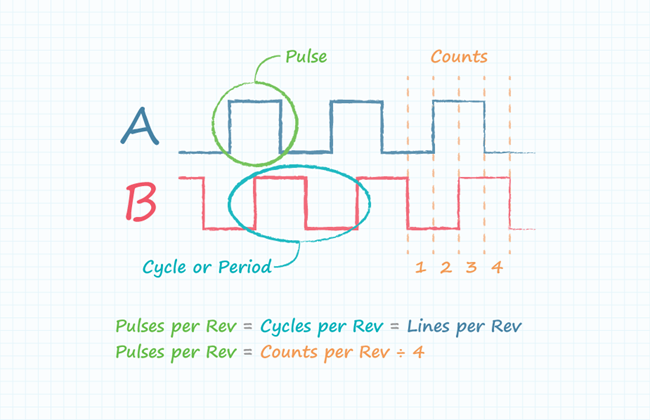
When an incremental encoder rotates, two square wave outputs A and B are generated. These signals together form the quadrature output of the incremental encoder. These square waves A and B are 90 degrees out of phase as far as most encoders are concerned. The direction of the encoder can be identified with the observation of the changing states of the A and B outputs.
.png)
To determine how far the encoder has traveled, or the speed at which it is rotating, however, more information is required. It is crucial to know the resolution of the encoder in order to calculate this information. Resolution can be considered the granularity of the encoder, which simply means the number of pies the encoder has to divide per revolution.
Pulses Per Revolution (PPR)
STEPPERONLINE expresses the resolution of an encoder by using the term PPR or pulses per revolution. PPR depicts the number of high pulses per revolution of the encoder on its square wave output A or B. Although STEPPERONLINE does not use PPR for periods per revolution, on a technical level it is still accurate because the standard incremental encoder has a 50% duty cycle. This can be used to calculate how many mechanical degrees each pulse and period equates to on the basis of knowing the resolution.

Although PPR is used in all of STEPPERONLINE' encoder products, many companies often interchangeably use terms such as PPR, CPR, LPR, or resolution with contradictory definitions.
Counts per Revolution (CPR)
The most common meaning of CPR is the number of counts per revolution and indicates the number of quadrature decoded states in existence between the two outputs A and B. As outputs A and B switch between high and low, 4 different states exist with 2 bits of information representing 4 different states. A method of counting each state change with two outputs A and B together is described by the term quadrature decoding. This results in the existence of 4 times the number of counts per pulse or period. As a result, the encoder CPR is to multiply the PPR of the encoder by 4. You should also note that the abbreviation CPR is used by some encoder manufacturers to indicate cycles per revolution. Cycles per revolution is the complete electrical cycle or period of any one encoder output, which is equivalent to pulses per revolution. Since both counts per revolution and cycles per revolution use the same CPR abbreviation but differ by a factor of 4, this understandably causes some confusion and one must be careful to understand how resolution is defined.

Lines per revolution (LPR)
LPR which means lines per revolution is another term equivalent to PPR. Lines means the bars that are etched or printed on the optical encoder disc. Each line on the optical encoder disc will stand for one low pulse on the output, as they have a one-to-one relationship.
Because of the different definitions of resolution throughout the industry, this makes it critical to bring the numbers into the same format when comparing products from different encoder manufacturers. This is best done by looking at the waveform or timing diagram on the data sheet and calculating the pulse width in degrees or arc minutes if possible.






















































